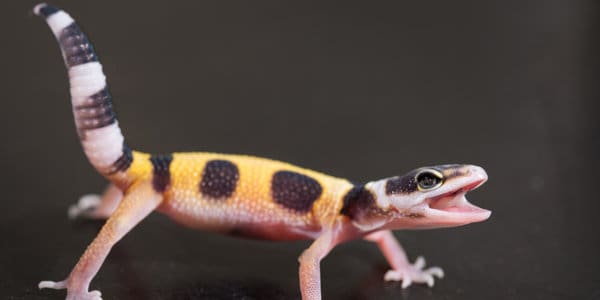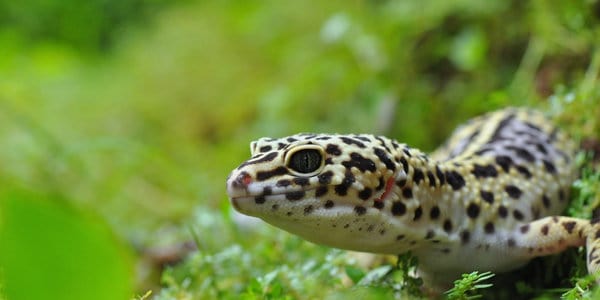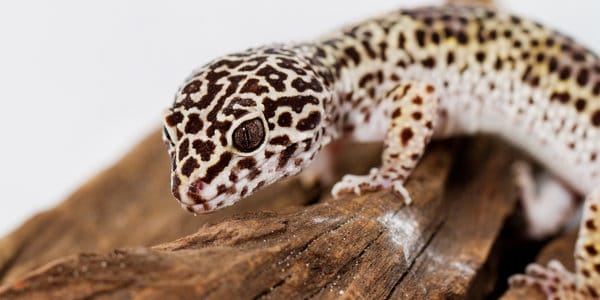There are two types of leopard gecko eggs: fertile and infertile. Fertile eggs are the result of sexual intercourse between a male and female leopard gecko, while infertile eggs are laid without mating.
The answer to whether leopard geckos lay eggs without mating is yes, they can. Female leopard geckos will start ovulating and producing eggs when they become sexually mature. However, for the ovulation process to be complete, the female leopard gecko must lay the eggs, regardless of whether or not she mates with a male. Eggs that are laid without being fertilized by a male are infertile.
If you want to understand leopard gecko breeding and reproductive capabilities comprehensively, please keep reading.
Do Female Leopard Geckos Reproduce by Laying Eggs or Giving Birth?
Leopard geckos are inherently oviparous, which means they reproduce by laying eggs. Although female geckos attain sexual maturity at about 18-24 months, most keepers wait until they are two years old to start breeding them.
Once a female is sexually mature, it’s capable of mating and laying eggs that can incubate and hatch into new babies. Therefore, if you are wondering whether leopard geckos give birth or lay eggs, they’ll bring forth new hatchlings by laying eggs.
Although the most commonly kept geckos, such as leopard, tockay, and crested geckos, reproduce by laying eggs, there are other gecko species from the Diplodactylinae subfamily that give birth. These include the jeweled gecko, cloudy gecko, Auckland green gecko, and gold stripe gecko.

Do Leopard Geckos Lay Eggs Without a Male?
Yes, female leopard geckos can produce eggs without a male. Since egg-laying is part of female leopard geckos’ ovulation process, they don’t need a male to start laying eggs. Once the creatures become sexually mature, their reproductive faculties begin to produce eggs even if they don’t come into contact with a male.
Therefore, don’t be surprised if you find eggs inside your female leopard geckos enclosure. This means that your leopard gecko has reached sexual maturity and it’s ready to breed. However, it’s crucial to note that the eggs that a female gecko lays without mating are infertile.
The eggs lack the genetic information often delivered by the male gecko, meaning that such eggs are incapable of developing into a baby. When a female produces eggs without a male, there’s no point in trying to incubate them. Instead of hatching into babies, the eggs will start growing fungus.
How Do You Know If Your Leopard Gecko is Pregnant?
Now that you know female leopard geckos can lay eggs with or without a male, how do you know when they’re gravid? Few clues can tell you whether your gecko is gravid.
This includes:
- Sluggishness – Female geckos will become cranky and snappy as they try to cope with the new changes brought about by pregnancy. The creatures will seem tired and weak and move around slowly and lazily.
- Lack of sleep – Being gravid puts a lot of stress on your leopard gecko as it brings several physical changes. You’ll notice your scaly friend having trouble sleeping.
- Loss of appetite – When your female leopard gecko becomes gravid, it will become sluggish and tired and start losing interest in food. But since food is vitally essential during this stage, you should try to make the geckos eat by serving them their best meal.
- Swollen abdomen – One of the most apparent signs of pregnancy in geckos is a swollen abdomen. You’ll feel the eggs inside the stomach if you gently press the gecko’s belly.
- Visible eggs – You’ll also see the eggs with your eyes when they’re still in the abdomen. Leopard geckos have thin skin that allows you to see the eggs when they’re still in the stomach. When you see white spots with baby pink lining, this is a sign that your gecko is carrying some eggs.

Where Do Leopard Geckos Lay Their Eggs?
Wild female leopard geckos look for secure areas in their habitat, such as under rocks, tree barks, or logs, to lay their eggs. These creatures need to be provided with an egg-laying box when in captivity. If you don’t provide them with a laying nest, they will lay the eggs in the hide, under logs, or any other hidden places in their terrariums.
However, female geckos are not the most devoted parents. Besides laying eggs in hidden places, they will do nothing else to ensure that their eggs and hatchling are safe. Once they lay eggs, they’ll go away and won’t return to check on the eggs unless they want to eat them.
How Many Eggs Do Female Leopard Geckos Lay?
After mating successfully, your female leopard gecko will stay for 16 to 22 days to start laying eggs. Once the gestation period is over, your female gecko will lay a clutch with 1 to 2 eggs. During a breeding season, a female can lay roughly 4 to 5 clutches.
In a breeding season, your female leopard gecko will produce approximately 8 to 10 eggs and 80-100 eggs in her lifetime. You’ll likely see the eggs beneath the female’s abdomen during gestation. Don’t panic, as this is normal!
Remember to put your scaly friend on a high-calcium diet when it’s gravid, as much of the calcium in its body will be used in egg production.
You shouldn’t touch the eggs as soon as they are laid; they are sticky and highly soft. You must give them a few days to develop their characteristic leathery, chalk-white membrane.
How Often Do Leopard Geckos Lay Eggs?
Leopard geckos in captivity can be encouraged to breed any time during the year. However, their natural breeding season is anywhere between January to September.
Once the breeding season commences, female geckos will lay a clutch with one or two eggs every 16 to 22 days. This will go on for over 4 to 5 months, which is how long the leopard gecko’s breeding season lasts.

How Do You Differentiate Between Fertile and Infertile Leopard Gecko Eggs?
The first distinction between fertile and infertile eggs is their physical appearance. As mentioned in the section above, female geckos lay sticky and incredibly soft eggs. When left for a day or two, fertile eggs will become firm, develop a leathery, white membrane around them, and have a regular shape. Conversely, when fertile eggs are incubated, they’ll grow and hatch into babies.
On the other hand, infertile leopard gecko eggs will remain soft and have an irregular outer shape. Their shells might develop translucent patches. Conversely, when infertile eggs are incubated, they’ll start growing fungus.
However, egg candling is the best way to determine whether leopard eggs are fertile or infertile. This is a process where a bright light is shone inside the egg.
You’ll need to take the eggs into a dark room and shine a bright light from a source such as a flashlight and observe what’s visible.
Gently place a flashlight under the egg and observe the internal contents of the egg. For fertile eggs, you’ll see a red embryo that looks like a dot, surrounded by a web of faint veins coming from the center of the egg to the outer zones. Conversely, the egg will cast a pinkish shade on the other side when light is passed through.
When you pass light through an infertile egg, there will be no outstanding features like in the fertile egg. The unfertilized egg will look like it has nothing inside except a yellow hue.
However, letting eggs with a yellow color incubate for a few days is the best way to determine whether they are fertile. This is because freshly laid eggs may initially be yellow on the inside. After incubation, the infertile eggs will grow fungus, become discolored, and produce a foul smell. Fertile eggs will go all the way to hatch into baby geckos.
What To Do with Infertile Leopard Gecko Eggs?
If your female leopard gecko lays eggs without a male, don’t try to incubate them since they won’t hatch. They will grow fungus and produce a stinky smell. The infertile eggs may even spoil fertile eggs if they are placed together in the same incubator.
Therefore, infertile eggs should be removed from the terrarium as soon as they are laid. The eggs should be disposed of properly to avoid further problems. Please don’t put them anywhere in the house, as they can grow fungus and make your home smell awfully.

Final Verdict
Leopard geckos are exciting reptiles to keep as pets. However, if you own a female leopard gecko, don’t be surprised if you find eggs in their cage, even if there is no male. When leopard geckos are sexually mature, they’ll start ovulating and lay eggs whether they mate or not.
